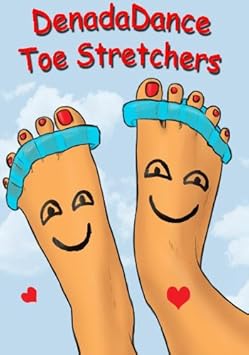Painful Bunions And Running
Overview
 The common bunion is a localized area of enlargement of the inner portion of the joint at the base of the big toe. The enlargement actually represents a misalignment of the big toe joint (metatarsal phalangeal joint) and, in some cases, additional bone formation. The misalignment causes the big toe to point outward (medically termed hallux valgus deformity) toward the smaller toes. This deformity is progressive and will increase with time. The enlarged joint at the base of the big toe (the first metatarsophalangeal joint, or MTP joint) can become inflamed with redness, tenderness, and pain. A small fluid-filled sac (bursa) adjacent to the joint can also become inflamed (bursitis), leading to additional swelling, redness, and pain. A more deep joint pain may occur as localized arthritis develops in later stages of the deformity. A less common bunion is located at the joint at the base of the smallest (fifth) toe. This bunion is sometimes referred to as a tailor's bunion or bunionette.
The common bunion is a localized area of enlargement of the inner portion of the joint at the base of the big toe. The enlargement actually represents a misalignment of the big toe joint (metatarsal phalangeal joint) and, in some cases, additional bone formation. The misalignment causes the big toe to point outward (medically termed hallux valgus deformity) toward the smaller toes. This deformity is progressive and will increase with time. The enlarged joint at the base of the big toe (the first metatarsophalangeal joint, or MTP joint) can become inflamed with redness, tenderness, and pain. A small fluid-filled sac (bursa) adjacent to the joint can also become inflamed (bursitis), leading to additional swelling, redness, and pain. A more deep joint pain may occur as localized arthritis develops in later stages of the deformity. A less common bunion is located at the joint at the base of the smallest (fifth) toe. This bunion is sometimes referred to as a tailor's bunion or bunionette.
Causes
Although they may develop on the fifth (little) toe, bunions usually occur at the base of the big toe. Bunions are often caused by incorrect foot mechanics. The foot may flatten too much, forcing the toe joint to move beyond normal range. In some cases, joint damage caused by arhritis or an injury produces a bunion. And some people are simply born ith extra bone near a toe joint. If you're at risk for developing a bunion, wearing high-heeled or poorly fitting shoes make the problem worse. As new bone grows, the joint enlarges. This stretches the joint's outer covering. Force created by the stretching pushes the big toe toward the smaller ones. Eventually, the inside tendons tighten, pulling the big toe farther out of alignment.
Symptoms
Bunions typically start out as a mild bump or outward bending of the big toe. Bunions at this stage are usually only a concern of appearance at this stage, and at this point they often don't hurt much. Over time, the ligaments that connect the bones of the toe stretch out, and the tendons attaching to the big toe gradually pull it farther and farther towards the second toe. Sometimes patients will find their first and second toes begin to press together too much, and they'll often get a painful corn between those toes. As the bunion progresses, the big toe may begin to ride on top of the second toe, or vice versa, creating a second deformity. Others will develop bump pain at the site of the bony enlargement on the side of the foot. A painful bursa may develop at that site. This is particularly true in tight shoes. Many patients also develop a painful callus beneath the foot. Capsulitis and other types of metatarsalgia may develop in the joints beneath these calluses, particularly in the second and third metatarsophalangeal joints (the joints in the ball of the foot). Over time, with the toe held in a crooked position for enough time, arthritis develops in the big toe joint. This will usually result in decreased range of motion of that joint (a condition known as "Hallux Limitis"), which as a result, often causes the patient to changes in the way a patient walks. Often the patient walks in an "out-toed", or duck-like, fashion, which very frequently causes secondary pain in the legs, knee, hip, and low back.
Diagnosis
Your doctor will be able to diagnose a bunion by asking about your symptoms and examining your feet. You may also have blood tests to rule out any other medical conditions, such as rheumatoid arthritis or gout, although this is rare. Your doctor may refer you to a podiatrist or chiropodist (healthcare professionals who specialise in conditions that affect the feet).
Non Surgical Treatment
Apply special pads and dressings to protect the bunion from shoe pressure. Inject steroid and local anesthetic around the bunion to reduce inflammation. This is especially useful if there is an associated bursitis. Recommend commercially available or custom made shoes. Prescribe functional orthotics to correct faulty foot function, and help prevent worsening of the deformity. Recommend bunion surgery to correct the deformity. 
Surgical Treatment
If your bunion is symptomatic and causing you persisting and troublesome symptoms then surgery should be considered. There is no correct amount of pain or inconvenience which a bunion may cause which warrants surgery. Symptoms which a bunion causes are generally subjective, and what is a problem in one person?s view will not be a problem in another's. For bunion surgery to be successful (correcting the deformity and losing the symptoms) the mechanical factors driving the deformity should be overcome. Bunion surgery should replace the 1st metatarsal closer to the 2nd thus reducing the width of the foot, and also realigning the tendons and reducing their deforming forces. These principals of bunion surgery are well demonstrated by the following x-rays which shows how a Scarf osteotomy has achieved this aim.